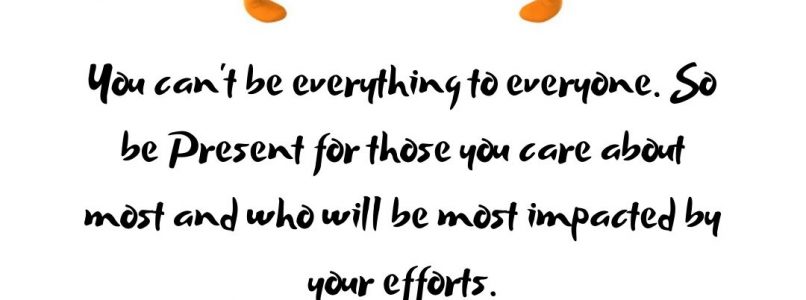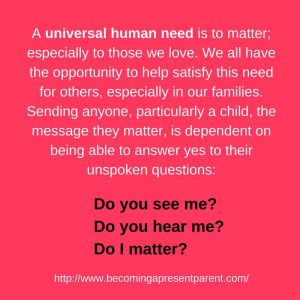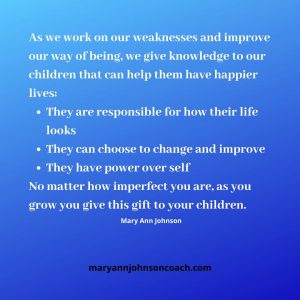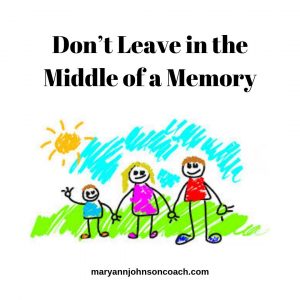
 Sometimes, as a parent, we’re handed opportunities for self-evaluation on a silver platter. I was given such a dish the other day when I caught my two-year-old son marching around the living room chanting, “Stop that! Now I have to take that away. Stop that! Now I have to take that away.” Good grief! I’m happy to contrast that little ditty with something he was muttering in my ear a few nights ago as I was putting him to sleep. “Daddy loves you; daddy loves you; daddy loves you.”
Sometimes, as a parent, we’re handed opportunities for self-evaluation on a silver platter. I was given such a dish the other day when I caught my two-year-old son marching around the living room chanting, “Stop that! Now I have to take that away. Stop that! Now I have to take that away.” Good grief! I’m happy to contrast that little ditty with something he was muttering in my ear a few nights ago as I was putting him to sleep. “Daddy loves you; daddy loves you; daddy loves you.”
It’s a bit overwhelming to think about how innocent my son is in his learning, how he soaks up everything that happens around him. In those two little exchanges, my son confirmed to me how important it is that I do not take the obligation lightly, I have as a parent to lay a right and solid foundation for him to build the rest of his life on.
It’s important to remember that children learn more by what we are and the environment and feelings that surround them than through what we are trying to teach through activities. If this is true, ask yourself, “how do we, as a family, consciously develop who we are and the environment and feelings that make up our home? What are we doing to consciously articulate the development of our family?”
A family mission statement is this articulation.
A family mission statement becomes part of our family cannon and the inspiration of our family culture. In other words, it’s what helps us consciously design the environment and feelings in our home that directly influence the development of our children. A Family Mission Statement breathes life into or inspires our family culture.
There is another essential element that a family mission statement brings to the table. I’ve interviewed several families who said, “I’m not sure how much we need a mission statement. It seems that the culture of our family is pretty good. We don’t have a formal, articulated mission statement, but we talk about the things that might be in a statement a lot.”
This is a model that works for many families. However, consider the specific model you’re using to train your children in developing, managing, and leading their own families.
For these parents I interviewed, they were clear on the things they were teaching regularly to their children, which were influencing their family culture. But, are they also teaching their children how to do that in their own homes? Are their children even aware that there is a model to follow? Are they aware of the idea of culture, it’s purposeful creation, and the impact it has on the family?
A Family Mission Statement is not only an articulation of your family’s development; it’s also a specific model of training for good family development, management, and leadership.
Through the course of the next few blog posts, I’ll be taking you through several exercises to help your family create your own inspiring family mission statement.
Assignment #1: Begin by evaluating your family’s current culture. Consider the daily environment and feelings in your home. Talk to your spouse about it. Are your family environment, feelings, and culture such that they will inspire your children’s growth and character? Now, try a brainstorming exercise by asking yourself: what are the core things I want my child to do or know? Put your list somewhere so that you can add to it when things come to your mind.
A Family Mission Statement Matters. Please share with those you care about.
Part 2 – https://www.maryannjohnsoncoach.com/family-mission-statements-rock-part-2/
Part 3 – https://www.maryannjohnsoncoach.com/family-mission-statement-part-3/
Part 4 – https://www.maryannjohnsoncoach.com/family-mission-statements-rock-part-4/



 I saw an insurance commercial in which the adults (portrayed by kids) were being treated like children by the insurance company. They felt helpless, undervalued, and frustrated. When I saw this commercial, I, like most of you, could relate to those feelings. At the end of the commercial, a rival insurance company helped a woman (portrayed by a child) with her needs. She stood there smiling, feeling good.
I saw an insurance commercial in which the adults (portrayed by kids) were being treated like children by the insurance company. They felt helpless, undervalued, and frustrated. When I saw this commercial, I, like most of you, could relate to those feelings. At the end of the commercial, a rival insurance company helped a woman (portrayed by a child) with her needs. She stood there smiling, feeling good. of my relaxing and fun things to-do list. I was feeling some pressure. My 3-year-old daughter, Marie, kept coming into the sewing room and interrupting me. This and the sewing were wearing on my nerves. I was ready to spank her. After all, she was bugging me, and she could see perfectly well that I was busy! I decided if she interrupted me again, I was going to swat her.
of my relaxing and fun things to-do list. I was feeling some pressure. My 3-year-old daughter, Marie, kept coming into the sewing room and interrupting me. This and the sewing were wearing on my nerves. I was ready to spank her. After all, she was bugging me, and she could see perfectly well that I was busy! I decided if she interrupted me again, I was going to swat her.
 When we moved to Laurel, Montana over 3 decades ago it was a jolt. We had lots of little kids and we didn’t know anyone. We had no family in Montana and no one we knew had ever lived there.
When we moved to Laurel, Montana over 3 decades ago it was a jolt. We had lots of little kids and we didn’t know anyone. We had no family in Montana and no one we knew had ever lived there.
 Sometimes
Sometimes 



 I came from a family of complainers. I can still hear my grandmother complaining to my grandfather about all kinds of things. I can hear my aunts and their complaints. After all, we used to hide under the kitchen table, which had a cloth that reached to the floor and listen in on their private conversations. I, in turn, became a complainer. When I listen to my sisters and cousins, I hear the echoes of those long dead and their complaints. It’s a family tradition, of sorts.
I came from a family of complainers. I can still hear my grandmother complaining to my grandfather about all kinds of things. I can hear my aunts and their complaints. After all, we used to hide under the kitchen table, which had a cloth that reached to the floor and listen in on their private conversations. I, in turn, became a complainer. When I listen to my sisters and cousins, I hear the echoes of those long dead and their complaints. It’s a family tradition, of sorts.
 Recently, I taught a class on consistency. I have taught this topic many times and have written about it often. I gave the class some tips on how to work toward being more consistent. However, this year I added a new tip that I have learned the hard way over the last couple of years. It applies to more than just remaining consistent. It applies to every change we want to make or promise we want to keep.
Recently, I taught a class on consistency. I have taught this topic many times and have written about it often. I gave the class some tips on how to work toward being more consistent. However, this year I added a new tip that I have learned the hard way over the last couple of years. It applies to more than just remaining consistent. It applies to every change we want to make or promise we want to keep.
 Do you recall the White Rabbit in Lewis Carrols, Alice in Wonderland? You know the jumpy little guy who was always crying out, “I’m late, I’m late, for a very important date.” He was so worried about being in the right place at the right time. He had so much on his plate.
Do you recall the White Rabbit in Lewis Carrols, Alice in Wonderland? You know the jumpy little guy who was always crying out, “I’m late, I’m late, for a very important date.” He was so worried about being in the right place at the right time. He had so much on his plate.
